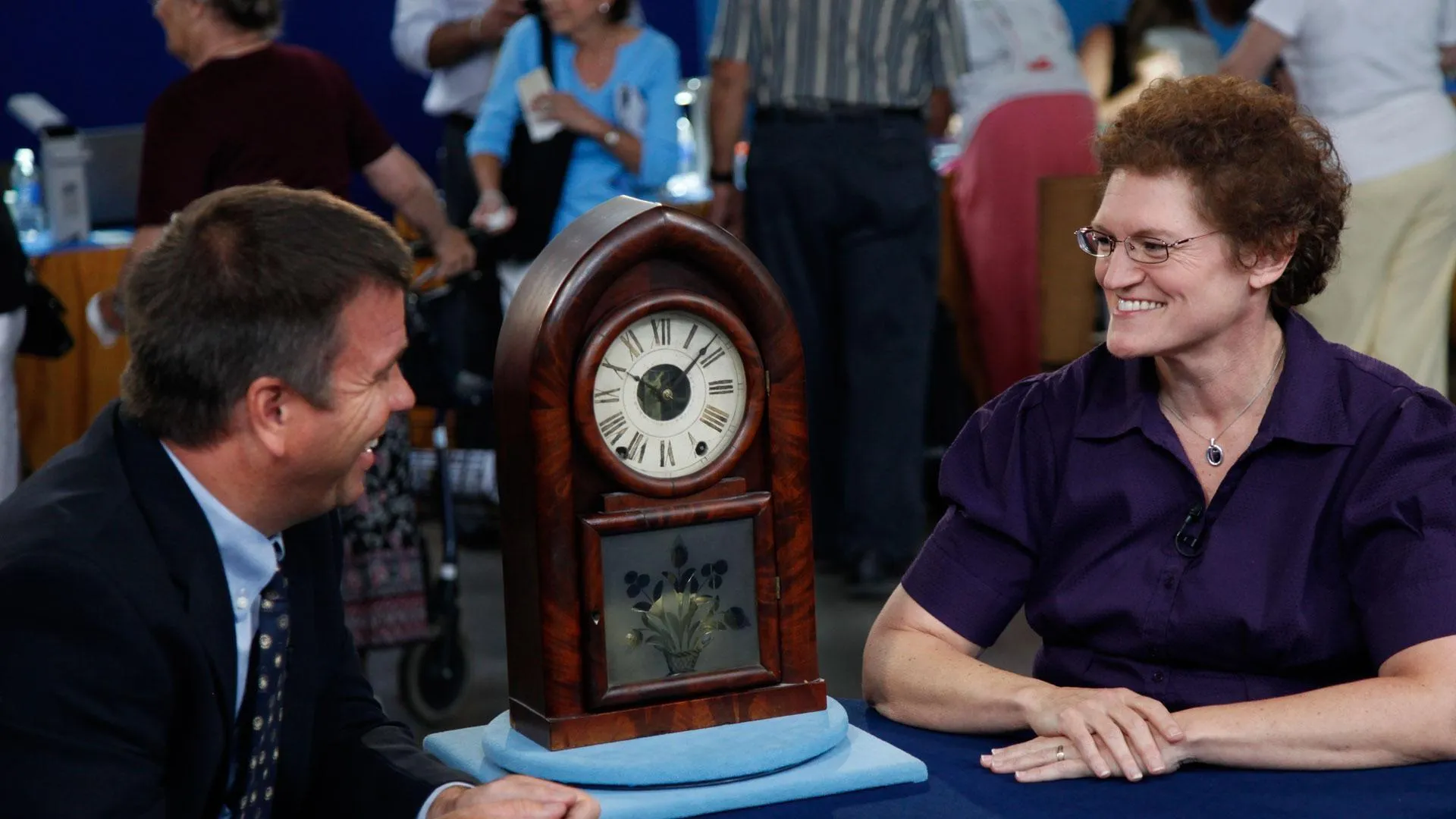GUEST: My mother had the pillow that she got from my great-grandfather, and this I found in her basement while taking care of her stuff after she passed away.
APPRAISER: When were you doing all... cleaning all this out?
GUEST: Three years ago.
APPRAISER: Three years ago?
GUEST: Yep.
APPRAISER: What do you know about these things?
GUEST: The pillow, I guess my grandfather brought it back from Nezperce, Idaho, as far as I understand. And this I know nothing about.
APPRAISER: Could he have taken a detour through Niagara Falls?
GUEST: Maybe. I don't know.
APPRAISER: This piece is from Niagara Falls.
GUEST: Okay.
APPRAISER: Or from that area. It was probably made by Seneca or Iroquois or Mohawk. It's dated 1906. These things were made as tourist items. The beading on this is called cluster beading or clump beading. And you can see how it's kind of built up. And it's a way that gives it dimension and makes it more 3-D. This one needs to be cleaned up a little bit, but other than that, it's in fairly good shape. But it's not Nez Perce at all
GUEST: Okay.
APPRAISER: Whole 'nother world of Indian tribes. The other piece is Cheyenne, and it's called a "possible bag," because it could be used to hold possibly anything. The nice thing about the one you have is it's beaded on both sides, and it's not beaded the same on both sides. The back side is almost a negative design of the first side, and it makes for a very beautiful pattern. The beading is called the lazy stitch, and each one of these little groups of beads is on a piece of thread, and it's tacked down at each end. And that's why it covers the whole bag. And it was a quick way to do it. Don't see them beaded on both sides a lot. Very simple, box-and-bar design, it's called. Very classic to the period of the 1870s and 1880s.
GUEST: Okay.
APPRAISER: The sewing is done in a combination of animal sinews and threads. Just a very nice piece. This was most likely gotten by your grandfather in Montana or Wyoming, in that area.
GUEST: Okay.
APPRAISER: Value. Well, your Nez Perce piece, which is really Seneca or Iroquois, if you cleaned it up a little bit, it would probably be worth, in an auction, $150 to $200.
GUEST: Okay.
APPRAISER: Today's market's kind of off, and things are a little slow. But even with that said, if this bag here came up for auction... and that needs to be cleaned also. It's fairly dirty from dust. But it would probably sell for $3,000 to $5,000.
GUEST: Okay.
APPRAISER: So it's a nice find for the basement.
GUEST: Yeah, very nice one. Surprised.



